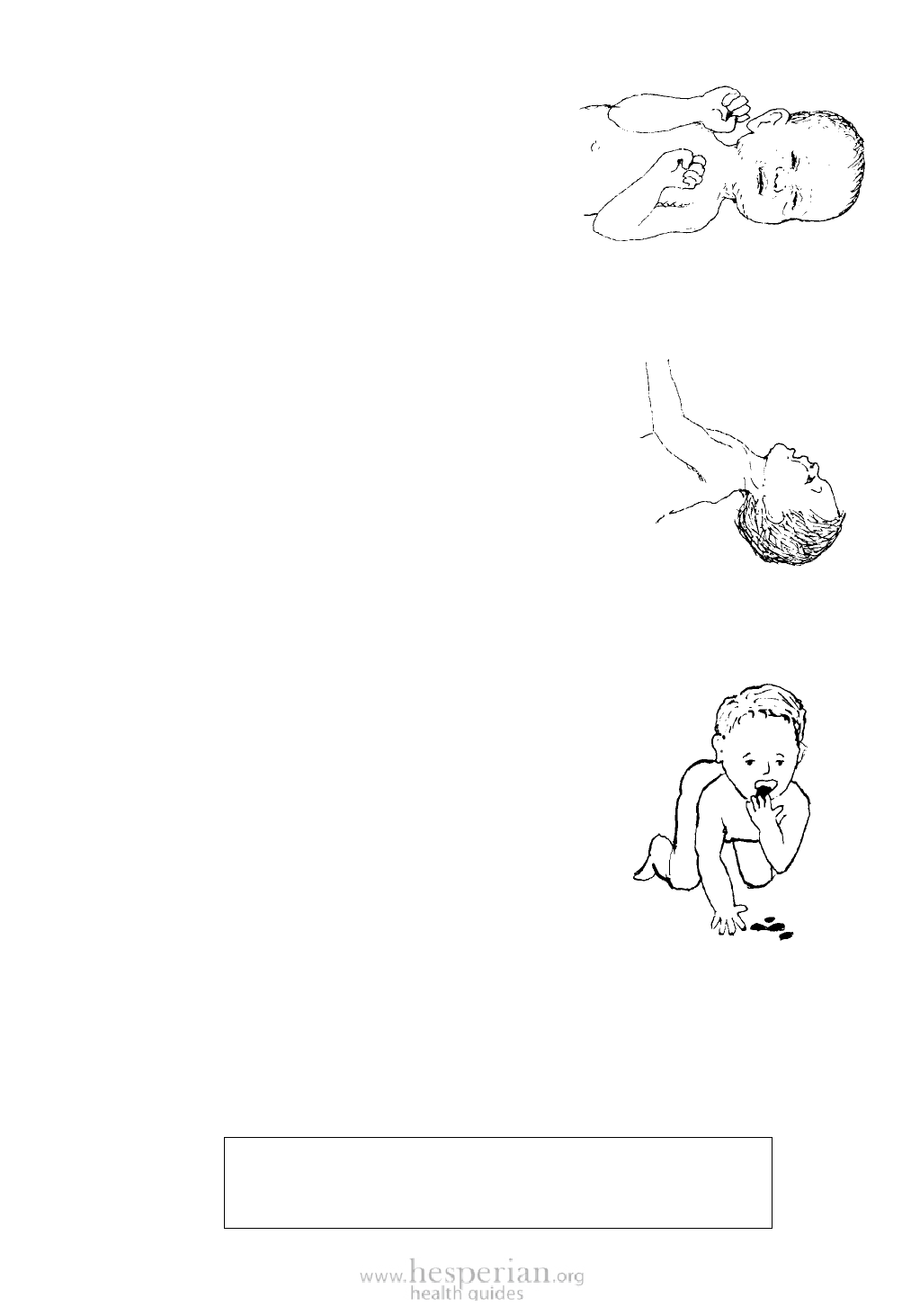
Where There Is No Doctor 2011 307
Seizures (Fits, Convulsions) (see p. 178)
Common causes of seizures or convulsions
in children are high fever, dehydration, epilepsy,
malaria, and meningitis. If fever is high, lower it
rapidly (see p. 76). Check for signs of dehydration
(p. 151), malaria (p. 186), and meningitis (p. 185).
Seizures that come suddenly without fever or other
signs are probably epilepsy (p. 178), especially if the child seems well between
them. Seizures or spasms in which first the jaw and then the whole body become
stiff may be tetanus (p. 182).
Meningitis (see p. 185)
This dangerous disease may come as a
complication of measles, mumps, or another serious
illness. Children of mothers who have tuberculosis
may get tubercular meningitis. A very sick child
who lies with his head tilted way back, whose neck
is too stiff to bend forward, and whose body makes
strange movements (seizures) may have meningitis.
Anemia (see p. 124)
Common signs in children:
• pale, especially inside eyelids, gums, and fingernails
• weak, tires easily
• likes to eat dirt
Common causes:
• diet poor in iron (p. 124)
• chronic gut infections (p. 145)
• hookworm (p. 142)
• malaria (p. 186)
Prevention and Treatment:
♦ Eat iron-rich foods like meat and eggs. Beans,
lentils, groundnuts (peanuts), and dark green vegetables also
have some iron.
♦ Treat the cause of anemia—and do not go barefoot if hookworm is common.
♦ If you suspect hookworm, a health worker may be able to look at the child’s
stools under a microscope. If hookworm eggs are found, treat for hookworm
(p. 373 to 375).
♦ If necessary, give iron salts by mouth (ferrous sulfate, p. 392).
CAUTION: Do not give iron tablets to a baby or small child.
They could poison her. Instead, give iron as a liquid.
Or crush a tablet into powder and mix it with food.